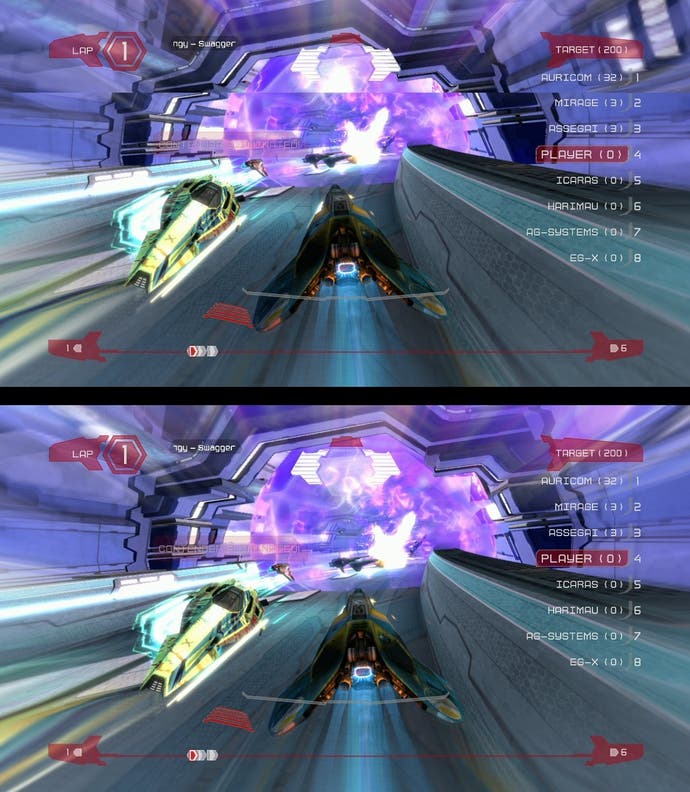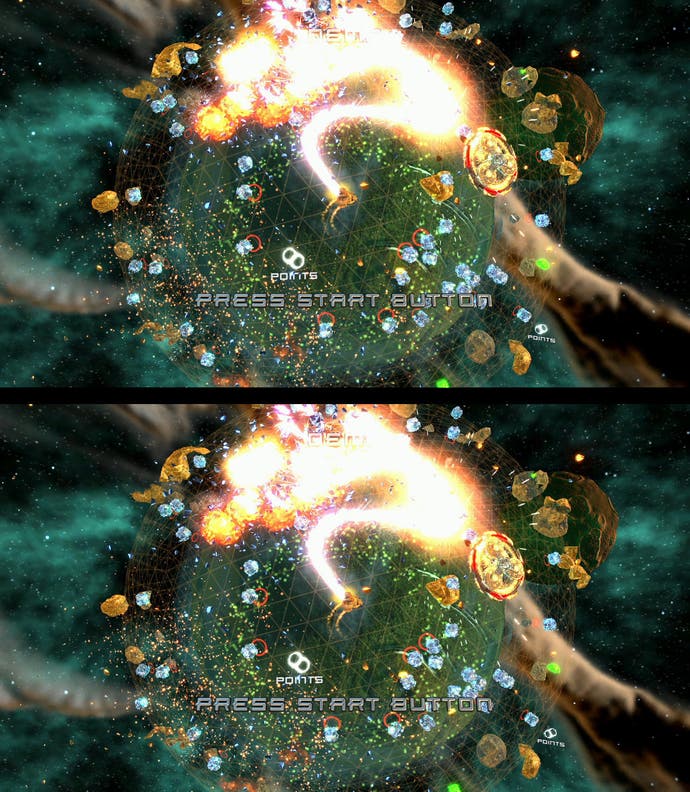Digital Foundry's 2010: Part 1
If I could turn back tech.
While Digital Foundry takes a short break over the Christmas period, Richard Leadbetter looks back over the year in gaming tech, discussing the major stories and offering behind-the-scenes tales of some of the ambitious features posted, and the ways in which DF puts together its unique articles.
In addition to the retrospective, there's also a bonus extra too: the Eurogamer stats archive has been mercilessly pillaged to bring you the lowdown on Digital Foundry's most popular articles for each month. Somehow, rounding out the year with a "performance analysis" on ourselves seems rather apt.
The concluding episode of this retrospective, covering off July to December, will be posted next week.
January
The Las Vegas CES show kicked off what would be one of the most exciting, yet controversial topics of 2010: 3D gaming. With all the major consumer electronics manufacturers showing off their brand new 120Hz, HDMI 1.4 displays, Sony demonstrated its commitment to stereoscopic gaming by showing a range of titles running on the new sets. Then-forthcoming titles such as Gran Turismo 5 rubbed shoulders with existing 3D wares like Ubisoft's Avatar and upgraded games like Housemarque's brilliant Super Stardust HD.
Having missed CES this year, and sensing that we were really missing out, I got into contact with SCEE to chase up what was going on and hopefully get some hands-on time. Credit to the PR team here - they gave us some superb access which I hope translated into some great coverage. Housemarque confirmed a full 720p/120FPS upgrade for Super Stardust HD, while a trip to Evolution Studios near Liverpool allowed to us to go hands-on with the new 3D tech and talk to the architects behind Sony's implementation of 3D gaming. Excellent stuff from a personal perspective: it's breaking this type of story and talking to the key people that is the most exciting part of running Digital Foundry at Eurogamer.


In other news, iPhone hacker George Hotz, aka Geohot, announced to a disbelieving world that he had hacked the PlayStation 3. By hotwiring the console's memory bus, Hotz effectively glitched the system into allowing Linux to read and write to parts of the system RAM it had no business accessing. The piracy-hungry hordes descended to pour scorn on Hotz's achievement since it did not immediately translate into free games, but other hackers were busy behind the scenes intent on honing the exploit into something more usable...
Meanwhile, nine months after emerging from "stealth development" at GDC 2009, OnLive's much-vaunted beta finally got into the hands of real gamers, who spilled their guts on the internet. Simultaneously it was revealed - as Digital Foundry had long suspected - that OnLive uses h264 video encoding, with one of the foremost minds on the subject blogging the core principles behind the firm's supposedly revolutionary compressor.
And finally, Apple unveiled its years-in-the-making iPad tablet, opening up a new front in the hotly contested handheld gaming arena. Presented as a device for comfortable browsing and "consuming" media, my first thoughts were on the technical make-up of the new A4 processor, its GPU and the implications for gaming. Answers to our questions wouldn't be forthcoming for several months...
Other Digital Foundry articles: Image quality is clearly a serious matter. The anti-aliasing effect was our attempt to provide an insight into the kinds of custom solutions developers employ in their pursuit of improved edge-smoothing without the overheads of traditional GPU solutions. I'm always pleasantly surprised at how well read this type of feature is - more people read and shared this than the majority of the Face-Offs we published in 2010.
Digital Foundry's Most Read:
February
A fairly uneventful month compared to the trials to come just weeks later, giving us time to catch up with BioWare's frankly epic Mass Effect 2, where we carried out comparisons with the original game, charted the advances the developer had made with Unreal Engine 3 and marvelled at just how close the Xbox 360 performed compared to a fully decked out PC.
Bungie released its first gameplay footage of Halo: Reach via the downloadable "ViDoc" (we still prefer a good Webinar), and we ripped it to shreds with the first performance analysis. Bearing in mind that we prefer the lossless precision of the HDMI output for our usual frame-rate tests, you might wonder how we're able to carry out accurate tests on a heavily compressed video.
It's actually fairly straightforward: at its heart, frame-rate comparison is all about counting the number of unique frames per second. Assuming a v-synced source, a dropped frame will be zero per cent different to its predecessor assuming you're analysing a lossless, digital output. When processing compressed video, the threshold for what constitutes a dupe frame changes - our tools scan for that threshold (compressed video is usually around one per cent) and adjust accordingly. Borderline dupes are then checked by eye, which is a bit tedious but gets the job done. This technique is a hell of a lot easier than doing performance analysis on OnLive footage... but more on that in part two of this retrospective.
While we were busy counting frames, Geohot claimed to have hacked the PS3's GameOS, saying that "I believe that defeats the last technical argument against the PS3 being hacked." Without any kind of piracy-enabling release, few believed him and Hotz's blog was soon swamped with personal abuse, reams of spam, links to malware dressed up as "Geohot's custom firmware" and embedded JPEGs of preposterously large penises.
Probably the most enjoyable Digital Foundry coverage for me from a personal perspective was our exclusive look at the Xbox 360 version of Metro 2033. THQ had invited me over to look at a work-in-progress build the month before, and I liked what I saw. As the 4A Engine specs emerged, we were offered the opportunity to quiz the developers about their tech and the resulting interview was a highly enjoyable read.
Elsewhere, details began to leak on the Xbox 360 release of Final Fantasy XIII, specifically the news that the game was less than half the size of the PS3 version. Having ascertained that most of the 40GB of the PS3 game was nothing more than pre-rendered cinematics, this news didn't particularly worry us - all that was required to achieve a good conversion was decent video compression, something we naively assumed that Square Enix would have invested some time and money into... and something we discussed in our FFXIII Tech Analysis, based on the Japanese version of the PS3 game.
Other Digital Foundry articles: Benjamin J Heckendorn's PS3 latency controller monitor board arrived at the office, allowing us to continue our input lag analysis, this time with a PS3 focus. In this piece, using Ben Heck's device, Killzone 2 pad latency was confirmed at a rather worrying 150ms - something Guerrilla Games was busily addressing for the sequel in its Nordic lair.
Face-Offs: The engrossing, if a touch disappointing BioShock 2 got its own standalone Face-Off where despite evidence of improvements on the Sony platform compared to its poor predecessor, the 360 game still proved to be the significantly superior release. Dante's Inferno, Darksiders, The Saboteur, Army of Two: The 40th Day, Dark Void and James Cameron's Avatar were put under the microscope in Face-Off Round 24.
Digital Foundry's Most Read:









